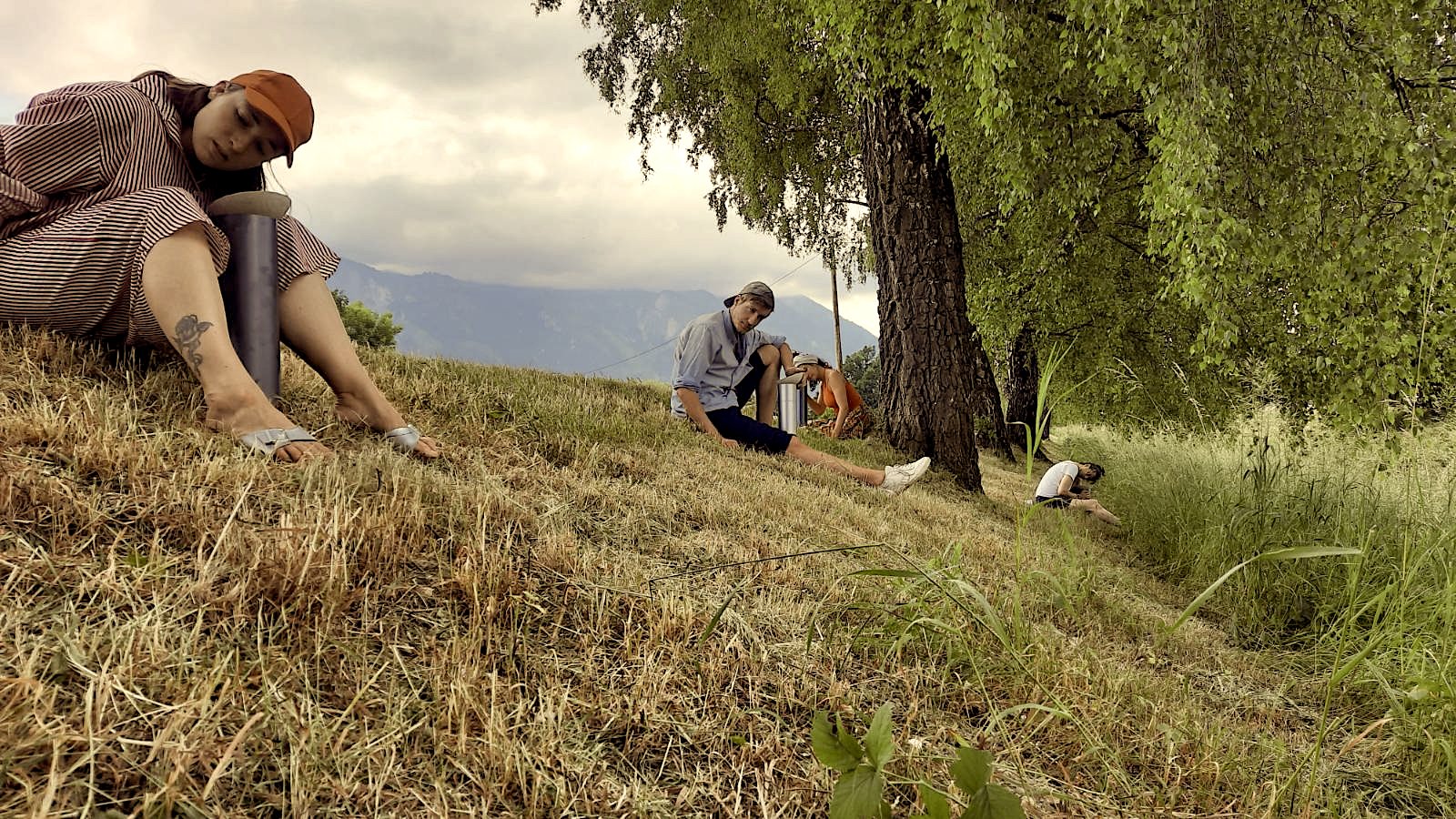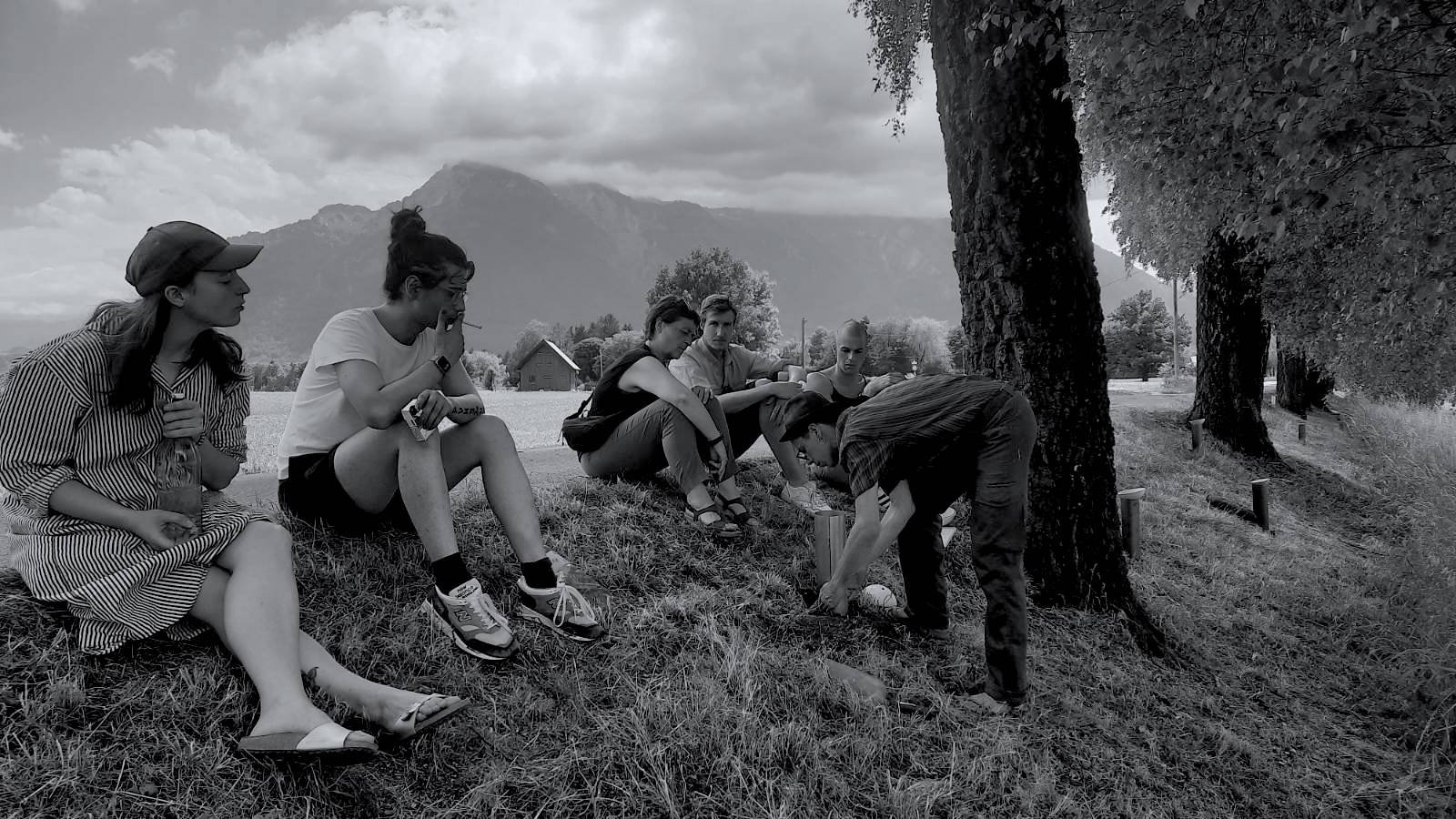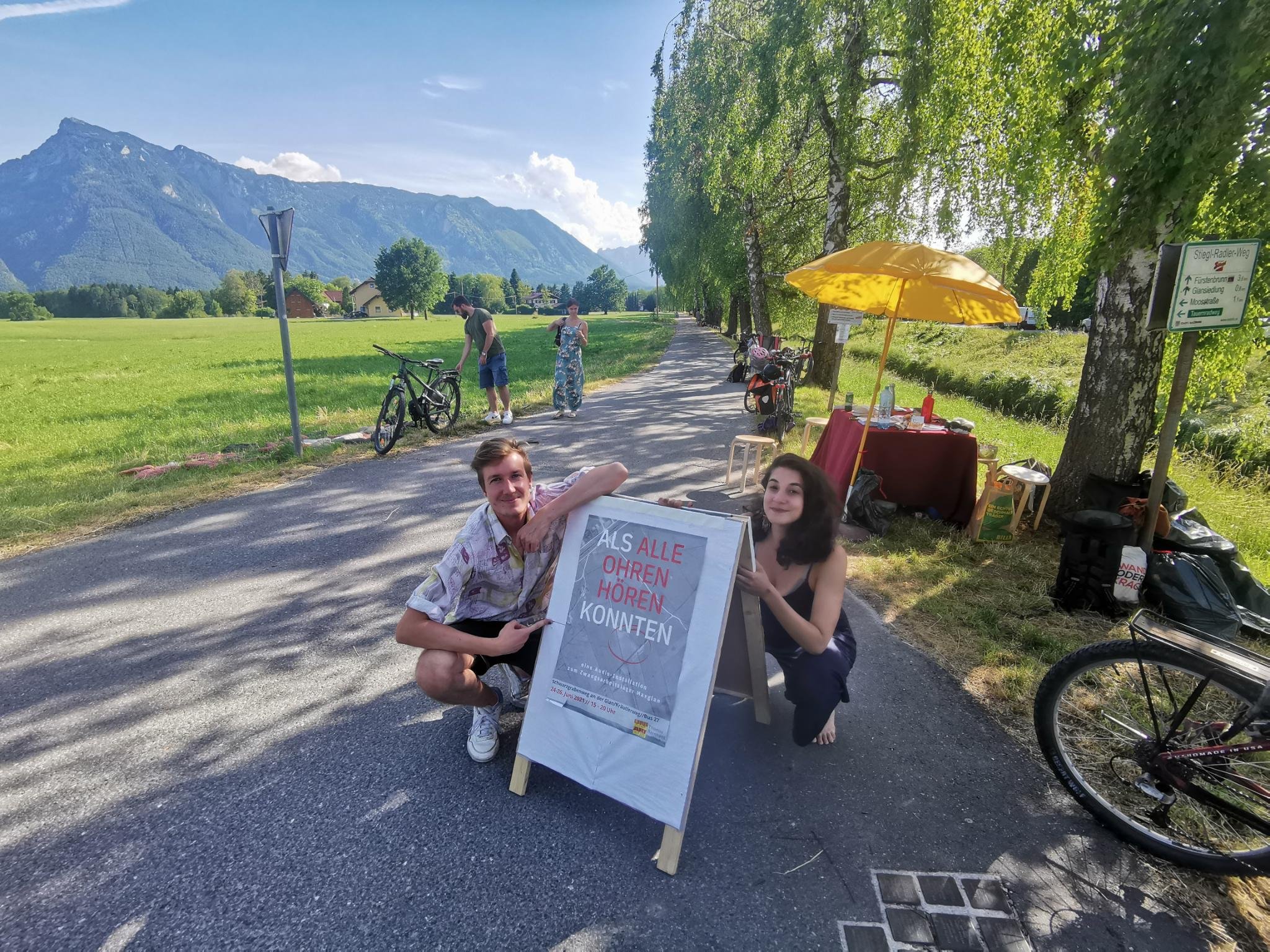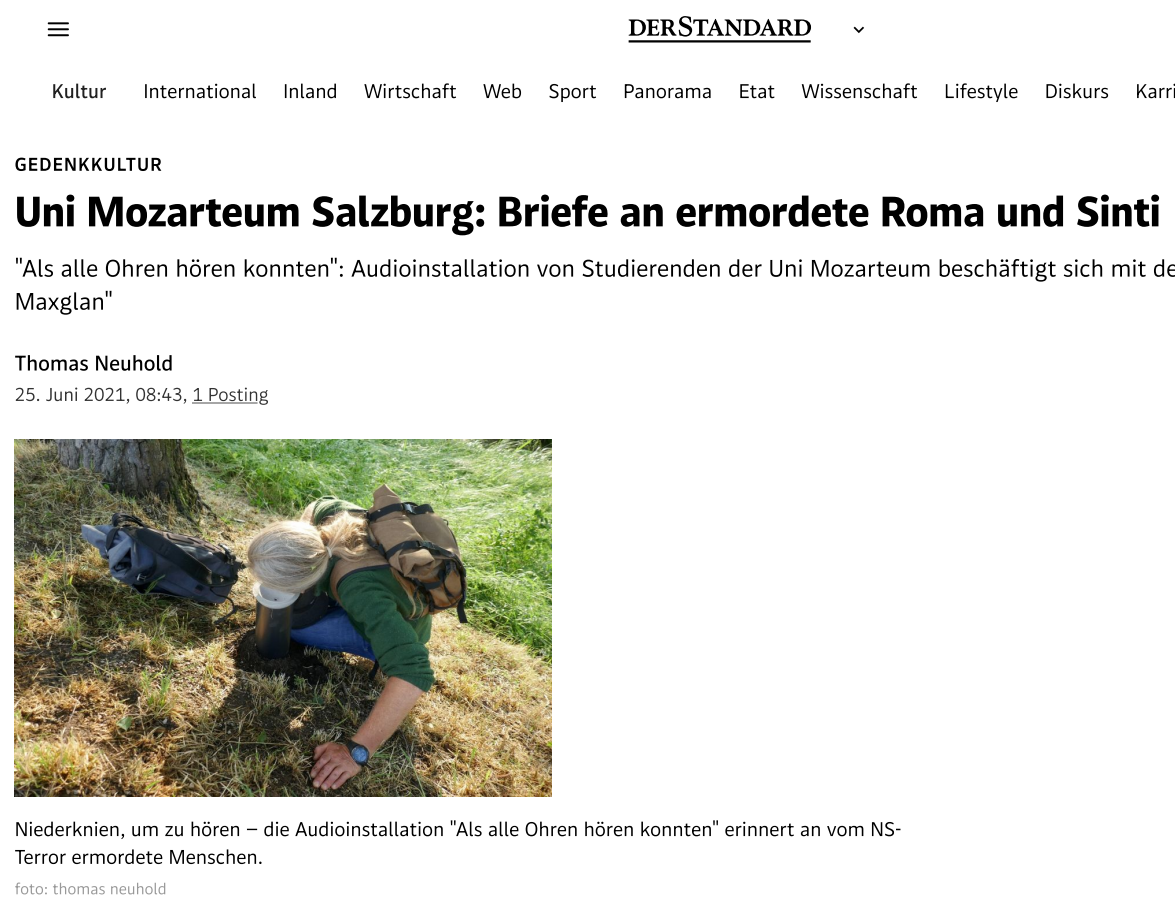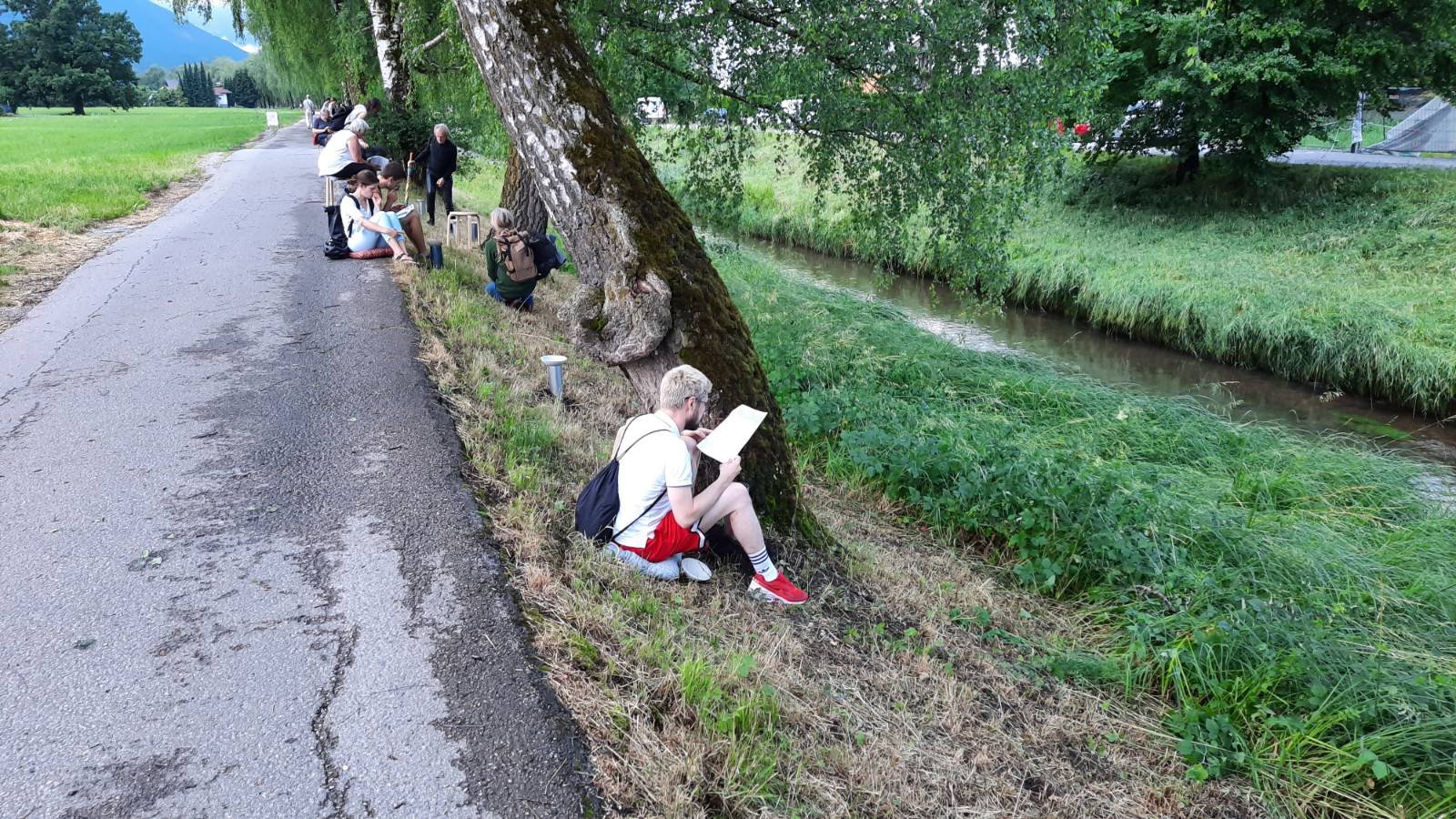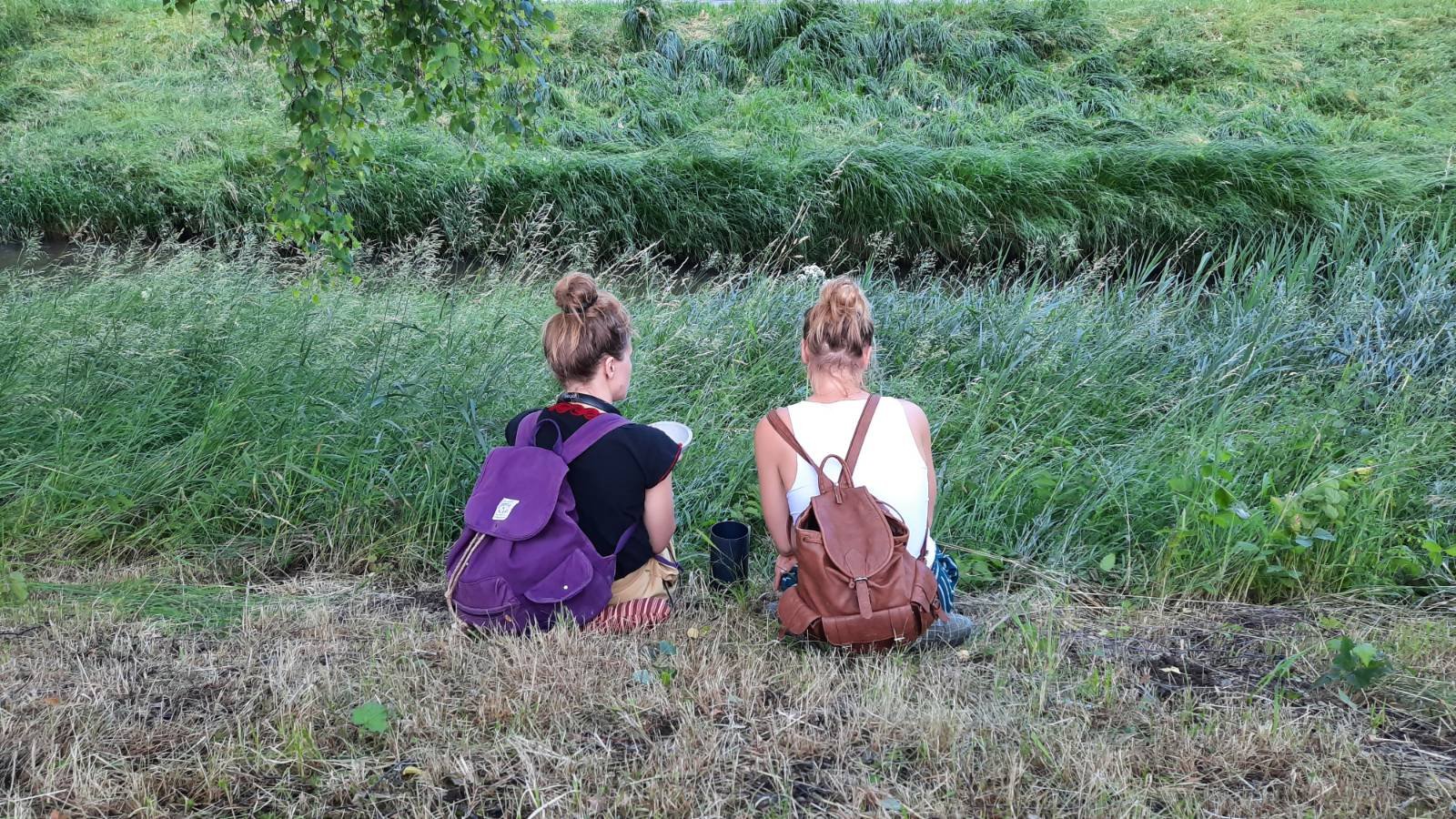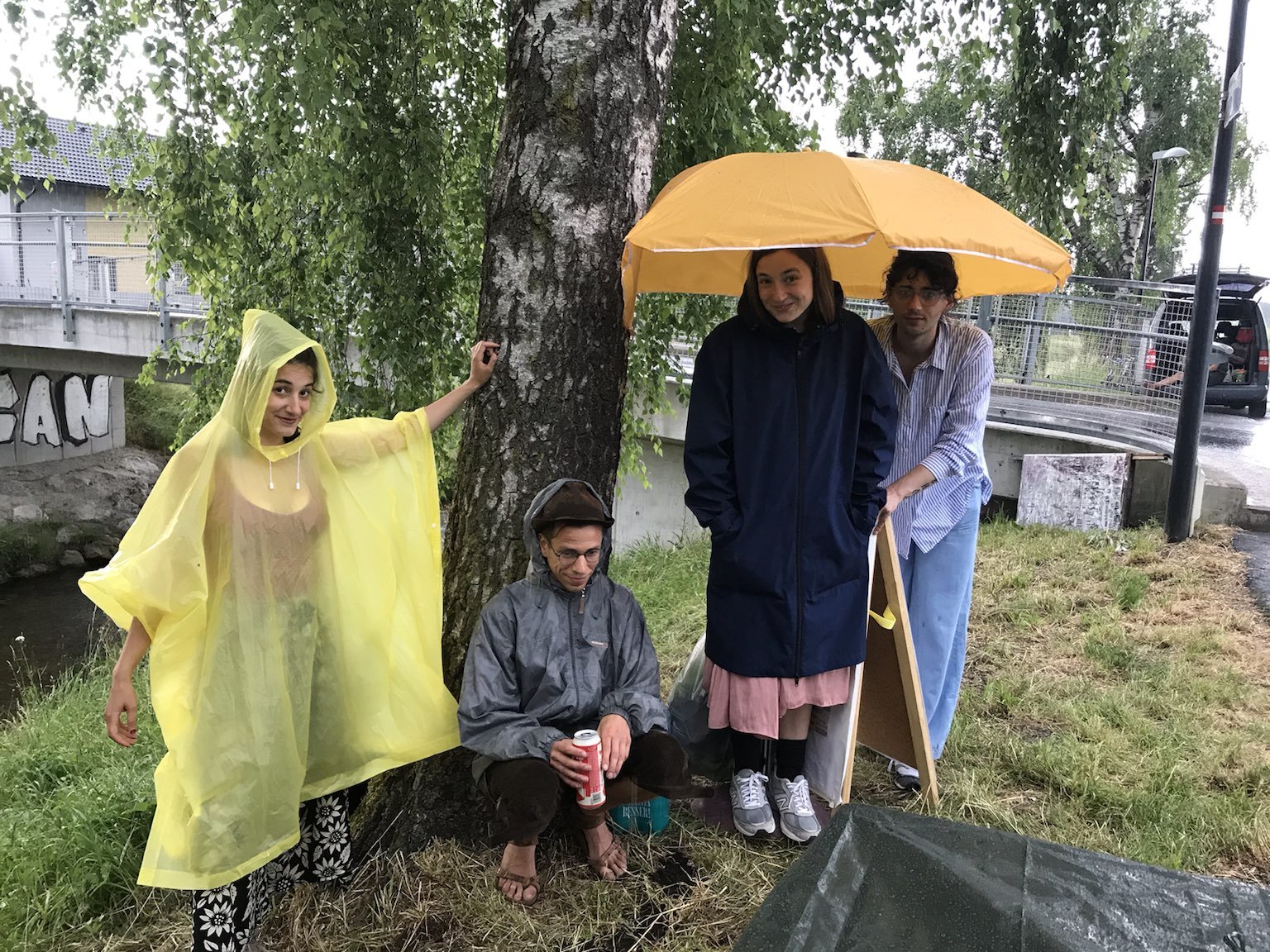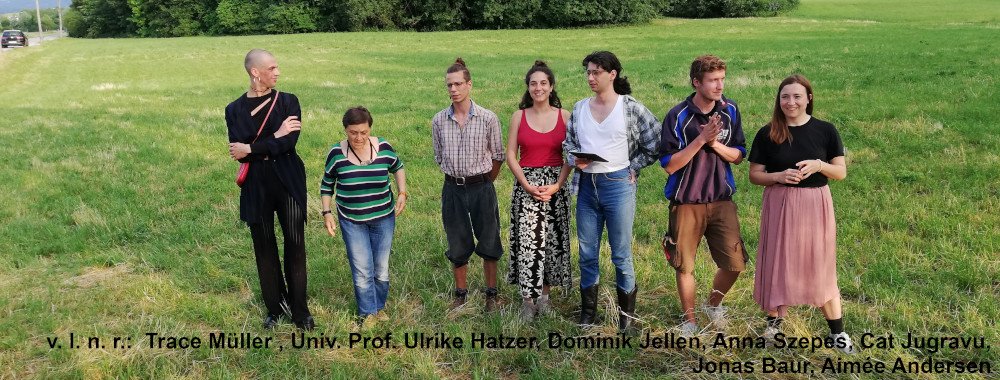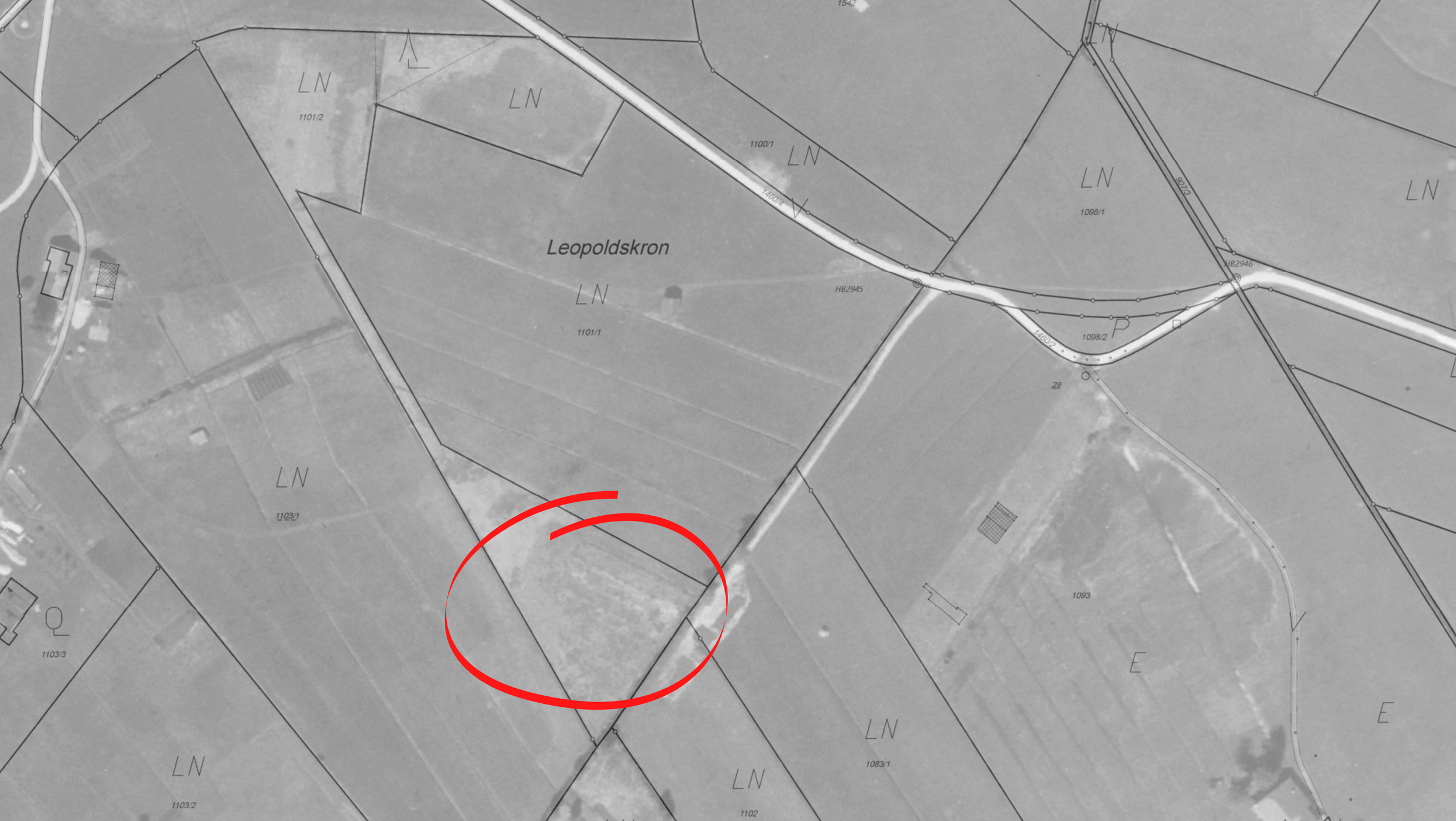
ALS ALLE OHREN HÖREN KONNTEN
An active remembrance audio installation
MAXGLAN & SZENE Salzburg
Salzburg, Austria 2021/2022
Produced and created by
MA Class 2020/22 of Applied Theatre - Artistic Practice and Society, Mozarteum University
Opening
24 - 26.6.2021
19.6.2022 (Sommerszene 2022)
Artists
Aimee Anderson, Jonas Baur, Dominik Jellen, Cat Jugravu, Anna Szepes
Mentors
Univ. Prof. Ulrike Hatzer
Mag. Trace Polly Müller
ABOUT
The audio installation was/is based on an artistic and caring practice of remembering, which was developed as part of a collective semester project. In the summer semester of 2021, nearly 50 so-called memory sponsorships were established, from which letters emerged. They sounded from specially designed sound columns installed in the ground. The installation opened to the public for the first time in the summer of 2021 at the Glan in Salzburg Leopoldskron-Moos. The letters were addressed personally to individuals, to Sinti*zze and Rom*nja, who were fellow citizens of Salzburg and surroundings and were held in the former forced labour camp Maxglan during the Holocaust and murdered in extermination camps.
The collaborative authorship mainly consisted of people who are active in and for Roma and Sinti communities themselves, as scholars, artists, activists, politicians or community workers. Thus, the voices and thoughts of Rom*nja and Sinti*zze themselves are in the centre. The letter writers connect in an individual way with individuals and their life stories through the practice developed together with Univ. Prof. Ulrike Hatzer and our mentor Trace Polly Müller, new, forward-looking ways of active commemorative culture emerge: individual biographies are vicariously brought back from collective oblivion into the here and now and placed in connection with today's life and thus with ourselves.
BACKGROUND
During 1939 and 1942, Sinti*zze and Rom*nja, predominantly from Southern Germany and neighbouring western states of Austria, were forcibly interned. Under the orders of SS-Obergruppenführer Reinhard Heydrich, Sinti and Romani families gathered at the Trabrennbahn in Parsch during the summer of 1940 with the intention of being "resettled" to occupied Poland. However, due to the postponement of the planned deportation, these families were eventually subjected to forced internment in Leopoldskroner Moos. This area, known for traditional camping, housed them in living wagons, tents, and barracks, enclosed by barbed wire and guarded by a 15-member team. Although the official address of the forced labour camp was "Kräutlerweg 2," its actual location was on the right side of Glanbach, near Schwarzgrabenweg. The administration of the camp was under the leadership of SS-Sturmbannführer Dr. Anton Böhmer from the Criminal Police.
In a letter dated September 6, 1940, from the head of the Criminal Police Station Salzburg, Anton Böhmer, to the head of the Reich Criminal Police Office, Reichskriminaldirektor Arthur Nebe, it was stated that the Sinti*zze and Rom*nja would be concentrated in the existing old Sinti camp near Leopoldskron, close to Salzburg, and kept under police surveillance. Work opportunities were provided to male and some female Sintizze and Romnja through the Salzburg Labor Office. To accommodate around 210 individuals, two large barracks were constructed, rendering the previous accommodations unsuitable.
During their internment, the forced labourers were involved in various tasks, such as working outside the camp in Glanregulierung, contributing to the construction of the "Reichsautobahn" and the "Führerkaserne" in Glasenbach, or engaging in "homework" within the camp, involving women, children, and elderly men. In 1940 and 1941, 51 Sinti*zze and Rom*nja were also obligated to work as "extras" during the filming of Leni Riefenstahl's movie "Tiefland" in Krünn near Mittenwald.
Historian Gert Kerschbaumer's documentation within the context of the Stolpersteine initiative in Salzburg sheds light on the names and destinies of the Sinti*zze and Rom*nja who were forcibly interned on the outskirts of Salzburg.
In memory of those who suffered during this time, the Stolpersteine project, in collaboration with the Salzburger Radiofabrik, commemorates the forced internment and tragic fate of individuals. Stolpersteine, small brass plaques placed in front of former homes preserve the memory of the past. Additionally, a memorial sculpture created by artist Zoltan Pap serves as a listening monument, honouring the victims. Our project ALS ALLE OHREN HÖREN KONNTEN adds up to the endeavour of re-actualizing the memory of those tragically lost by inviting collaborators and audiences to engage actively with the process of remembrance.
